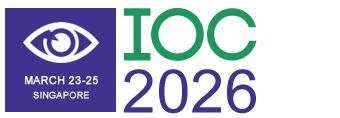Title : Optic nerve orthograde axonal transport in abusive head trauma suspects
Abstract:
Two autopsy studies of optic nerves from 76 eyes of abusive head trauma (AHT) suspects demonstrated block of orthograde axonal transport in the lamina cribrosa (LC) in 94% of cases by APP-A4 immunohistochemistry (IHC).1,2
APP-A4 is the only currently available IHC marker for orthograde axonal transport for use in human surgical or autopsy tissues. APP-A4 is a fragment of a large complex molecule generated in the cytoplasm of neurons including retinal ganglion cells that is transported in the rapid orthograde system to axon injury sites, presumably to aid in tissue repair. This IHC marker has been long used by neuropathologists to document shearing myelinated tract brain injury where sausage-like swellings are found microscopically. In non-myelinated LC axonal bundles, block in orthograde axonal transport results in end-bulb swellings, relatively easily distinguished from background staining.
Audience Take Away Notes:
- Axonal transport, both orthograde and retrograde, are essential basic physiological processes necessary for normal growth, development, and functioning of the human nervous system including vision. Clinicians are generally unaware of this important physiology and should include its study in all forms of neurological disease.
- Blockade of both orthograde and retrograde axonal transport in the LC in experimental hypertension in primate eyes strongly supports a mechanical rather than a vascular cause for glaucomatous optic nerve injury.
- The high rate of APP-A4 LC block in AHT should add it to the list of other common but non-specific ocular findings in AHT and its subgroup Shaken Baby Syndrome including multi-layered bilateral retinal hemorrhages, subdural brain and optic nerve hemorrhages, and skull and other bone fractures.
- The prescient causes of LC transport block include increased or decreased intraocular pressure (IOP) or increased intracranial pressure (ICP) and the raising or lowering of the translaminar pressure gradient (TLPG).
- The initial assessment of suspected child abuse or shaken baby syndrome should include IOP measurement, easily done in somnolent children with topical anesthesia or under general anesthesia with newer Tonopen or Rebound tonometers.
- Ongoing research should seek improved IHC markers, ideally one specific for AHT.




